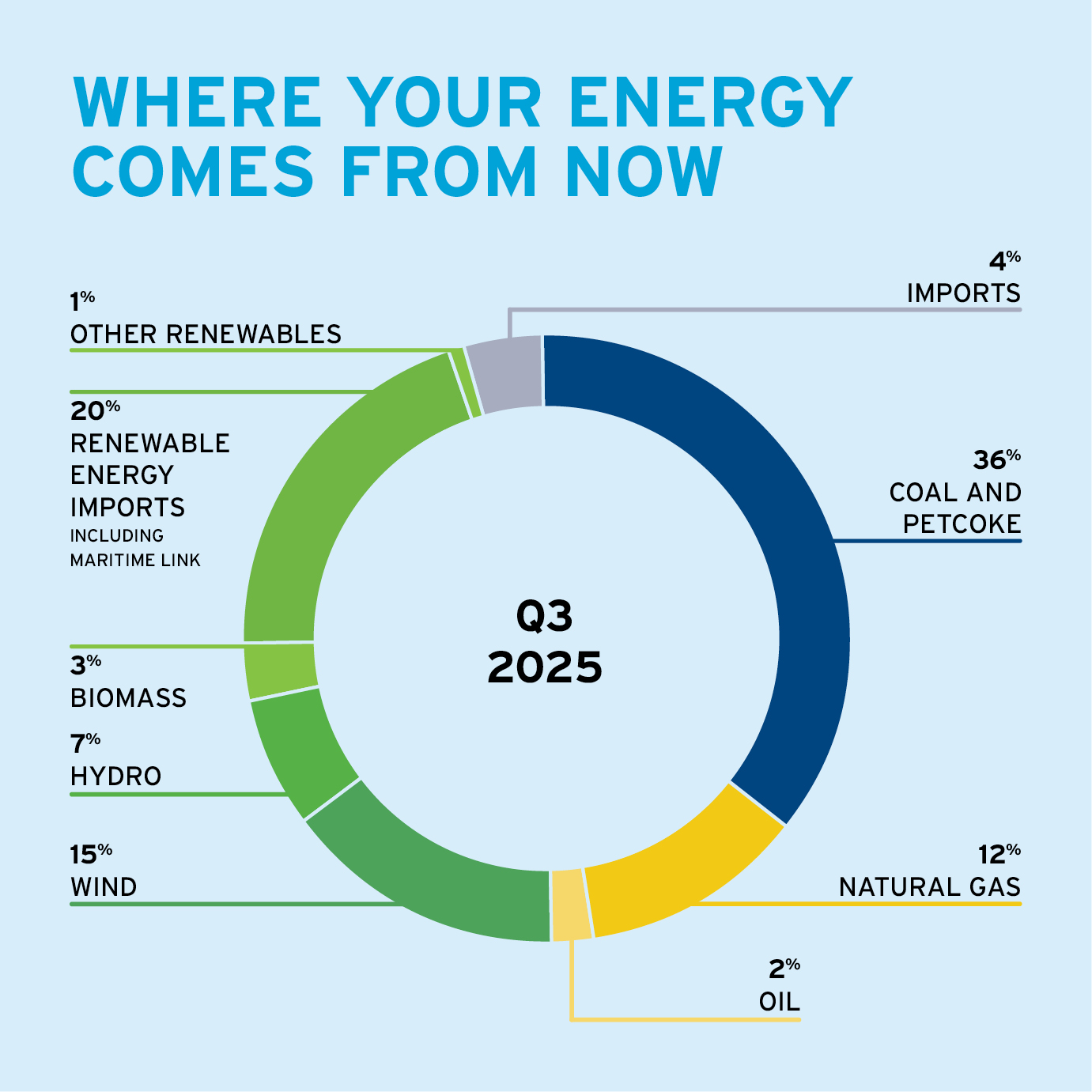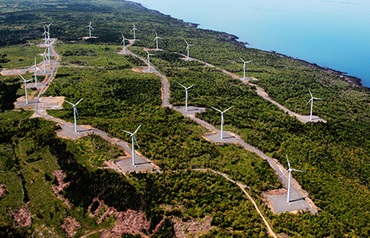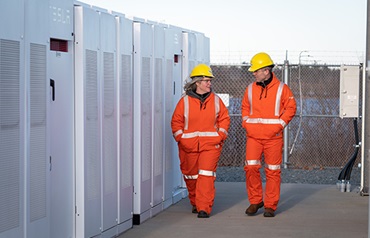Coal has been an important part of our history here in Nova Scotia, but we know it can’t be part of our long-term future. As part of our path to 2030, we’re removing coal from our energy mix, and transitioning to renewable energy.
A critical part of this transition is ensuring that we can continue to meet demand and deliver reliable electricity to our customers, every day. This will take a mix of solutions, one of which is on the conversion of two of our coal units to natural gas, while ensuring we’re planning for the future and the potentially eventual use of hydrogen for these units.
Natural gas is a fast-acting source of energy, meaning it can be activated quickly as a reliable back-up. The potential for hydrogen is incredible--not just for utilities, but many other applications, including buildings and transportation. Hydrogen can be produced from diverse local resources with the potential for near-zero greenhouse gas emissions.





 Wind is a low-cost source of clean energy that will play a crucial
part in our transition. We’re lucky to have an abundance of it in Nova Scotia! In addition to the 600 megawatts of wind we use today, up to 1,500 megawatts of wind energy will be added to the system over the next several years.
Wind is a low-cost source of clean energy that will play a crucial
part in our transition. We’re lucky to have an abundance of it in Nova Scotia! In addition to the 600 megawatts of wind we use today, up to 1,500 megawatts of wind energy will be added to the system over the next several years. As we add more wind and solar, we also need to be able to shift that energy to periods when the sun isn’t shining or the wind isn’t blowing. Grid-scale batteries will help us store renewable energy and bring more of it onto the grid when customers
need it most. We’re excited to be collaborating with local communities in the early stages of planning for three new proposed battery sites in Bridgewater, Halifax Regional Municipality, and King’s County. This includes financial support
from the federal government, as well as an investment agreement with the Canada Infrastructure Bank (CIB) and Wskijnu'k Mtmo'taqnuow Agency (WMA).
As we add more wind and solar, we also need to be able to shift that energy to periods when the sun isn’t shining or the wind isn’t blowing. Grid-scale batteries will help us store renewable energy and bring more of it onto the grid when customers
need it most. We’re excited to be collaborating with local communities in the early stages of planning for three new proposed battery sites in Bridgewater, Halifax Regional Municipality, and King’s County. This includes financial support
from the federal government, as well as an investment agreement with the Canada Infrastructure Bank (CIB) and Wskijnu'k Mtmo'taqnuow Agency (WMA)..jpg?sfvrsn=6e7b8e8_1)